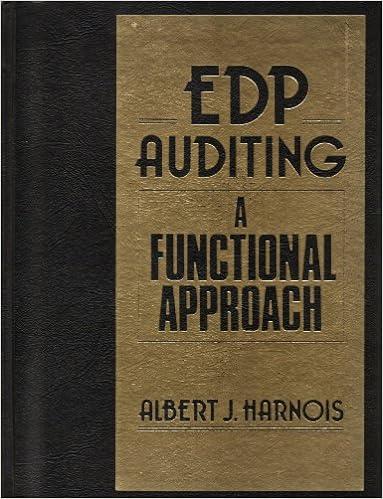Question
Mastery Problem: Activity-Based Costing (Advanced) Activity-Based Costing Traditionally, overhead costs are assigned based arbitrarily on the rate of either direct labor or direct materials associated
Mastery Problem: Activity-Based Costing (Advanced)
Activity-Based Costing
Traditionally, overhead costs are assigned based arbitrarily on the rate of either direct labor or direct materials associated with production. This makes sense when companies only make a few products, production processes are simple, and overhead costs are less pervasive. However, today production processes are more complex, companies make a wider array of products, and fewer costs are directly traceable to units of production. To address this, companies use activity-based costing (ABC).
Specifically, activity-based costing identifies and traces costs and expenses to activities and then to specific products. ABC uses multiple factory overhead rates based on activities. Activities are the types of work, or actions, involved in a manufacturing process or service activity. For example, assembly, inspection, and engineering design are activities.
The estimated activity costs are allocated to products using an activity rate. Activity rates are determined as follows: Activity Rate = Estimated Activity Cost / Estimated Activity Base Usage
| Illustrated Example of Activity-Based Costing |
Comparing Two Products under Traditional and Activity-Based Costing
Compare two projects under development by the same company. The following are a few aspects of each products development process relevant to costs.
| Product S | Product T | |
| Requires 3,840 hours of testing | Requires 960 hours of testing | |
| Requires 4,200 units of computing power | Requires 1,800 units of computing power | |
| Requires 30 developer hours to implement | Requires 70 developer hours to implement | |
|
Traditional Costing
Traditional costing would take the proportion of a direct cost, such as direct labor hours, and use it as the basis for allocating overhead costs, such as computing power and testing. In the following table, use developer hours as the basis for assigning overhead costs (computing and developer costs) to each project. If required, round your answers to the nearest dollar.
| Product S | Product T | |||
| Percentage of developer hours | 30% | Percentage of developer hours | 70% | |
| Testing cost | $ | Testing cost | $ | |
| Computing cost | $ | Computing cost | $ | |
| Developer cost | $ | Developer cost | $ | |
| Total cost | $ | Total cost | $ | |
| Percentage of developer hours | |||
| + Percentage of developer hours for Product S (30%)
| |||
| + Percentage of developer hours for Product T (70%)
|
Review the resources each product (S and T) requires for production and compare that to the costs calculated above under traditional costing. Does traditional costing serve as an accurate gauge of costs?
Activity-Based Costing
Using the data above for products S and T, calculate the costs using activity-based costing. Allocate the costs of testing, computing, and development based on the rates of activity consumed by each product's development process. If required in your computations, round per unit costs to the nearest cent. Round your final answers to the nearest dollar.
| Cost | Activity Base |
| Testing | Hours of testing |
| Computing cost | Units of computing power |
| Developer cost | Development hours |
| Product S | Product T | |||
| Testing cost | $ | Testing cost | $ | |
| Computing cost | $ | Computing cost | $ | |
| Developer cost | $ | Developer cost | $ | |
| Total cost | $ | Total cost | $ | |
Activity-based costing for varying batch production
A manufacturing company has the following two activities associated with completion of products:
- The setting up of machines for running batches of products
- The actual production of units produced
The company has annual manufacturing overhead costs of $2,000,000, of which $200,000 is directly involved in setting up machines for batch runs. During the year, the company expects to perform 400 machine setups, one setup per batch for a total of 400 batches of production. Assume that the batch sizes vary considerably, but the work involved in setting up the machines is not appreciably different from one job to the next.
If the company estimates that the $200,000 costs associated with setups will yield 400 setups this year, the cost associated directly with each setup will be $per setup. Because each job will require its own setup, setup costs are viewed as batch costs. Because $200,000 of the $2,000,000 are costs associated with setups, this means that costs associated directly with the production of units equal $.
Step by Step Solution
There are 3 Steps involved in it
Step: 1

Get Instant Access to Expert-Tailored Solutions
See step-by-step solutions with expert insights and AI powered tools for academic success
Step: 2

Step: 3

Ace Your Homework with AI
Get the answers you need in no time with our AI-driven, step-by-step assistance
Get Started


